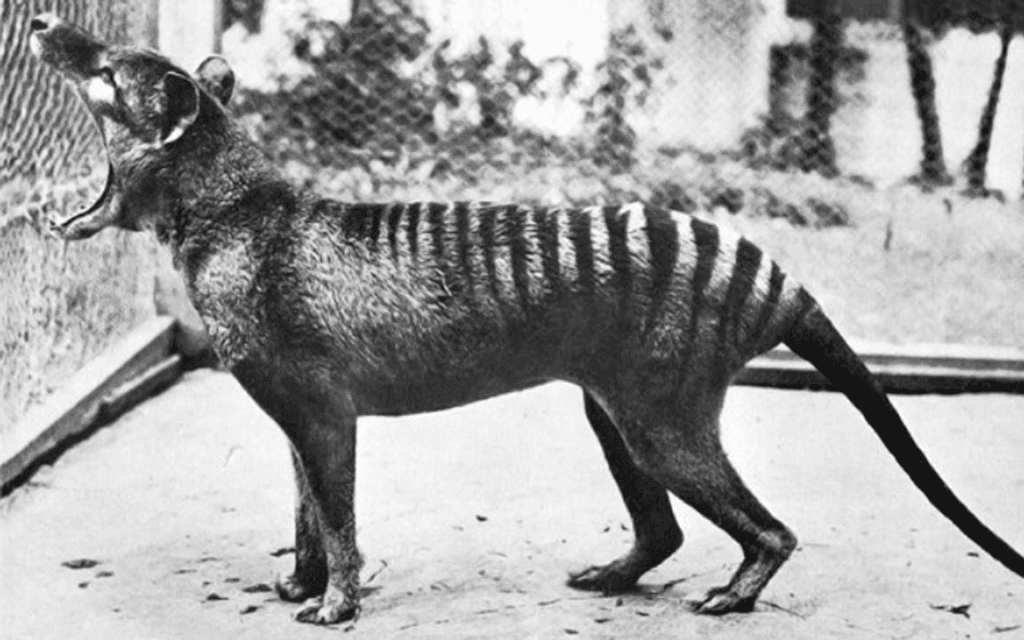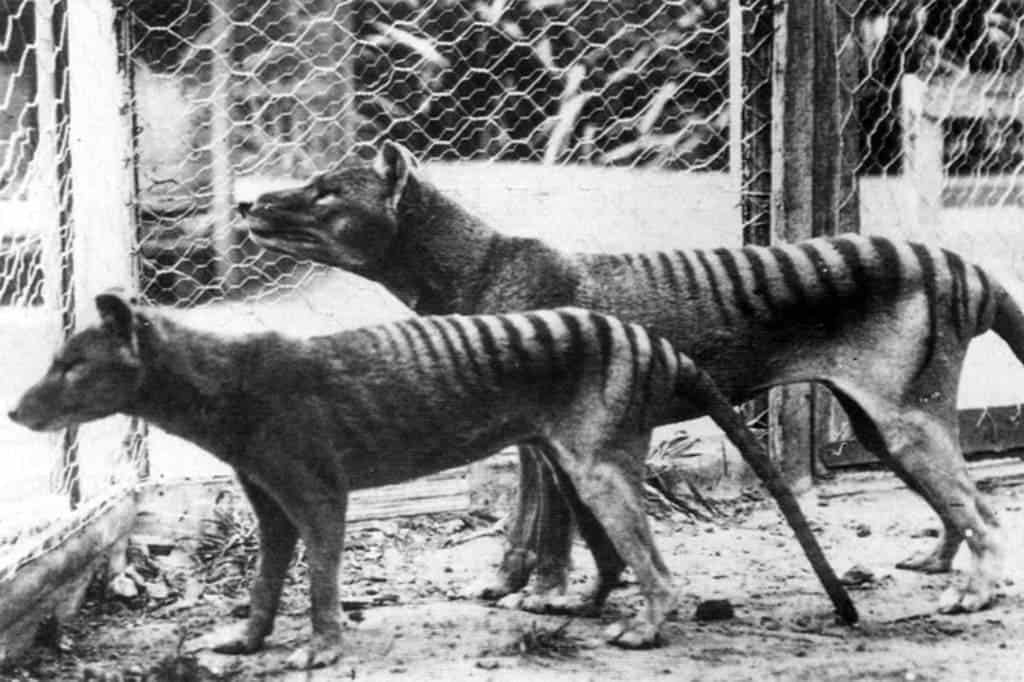Scientists have sequenced the genome of a Tasmanian tiger pup whose species went extinct more than 80 years ago. The findings offer not only new clues to the decline of this beloved species but also, surprisingly, show us that it was more related to the kangaroo than the dingo.

The thylacine (Thylacinus cynocephalus), commonly known as the Tasmanian tiger, was a peculiar species. It looked exactly like a dog or wolf, had the stripes of a tiger, but was a marsupial. That’s the kind of bizarre combination few places other than Australia can boast.
The story of the thylacine’s decline is inherently tied to that of humans. As soon as early hunter-gathers entered the picture, the latter was in trouble. As humans expanded across the continent, the range of the marsupial only declined. When humans introduced the dingo (Canis lupus dingo) to Australia several thousand years ago, the thylacine was almost wiped out by the competition. An isolated population could still be found in Tasmania though — but not for long.
In the 19th century, European colonists saw the marsupial predators as a pest that harmed their sheep. They paid a bounty of £1 per carcass, which placed the thylacine on the cusp of extinction.
In 1909, the bounties were ended but it was already too late. Only a couple of individuals remained, which were acquired by zoos. On 7 September 1936, the last Tasmanian tiger died in a zoo in Hobart, Australia.
With the last of its kind gone, science was left poorer. In the intervening years, however, some important things happened. Scientists discovered DNA and later, how to sequence it in ever greater detail and at a thinning cost.
A team led by Andrew Pask from the University of Melbourne sequenced the DNA from a thylacine pup who died in 1909 and has since been preserved in alcohol. The procedure enabled the researchers to obtain the nuclear genome of the Tasmanian tiger. Previously, geneticists had sequenced the species’ mitochondrial genome which is much shorter and is inherited only from the mother’s side.
The analysis revealed a steep drop in genetic diversity which suggests thylacine numbers first started to significantly drop some 70,000-120,000 years ago. That’s well before humans arrived on the continent.
A similar pattern was identified in the case of the Tasmanian devil (Sarcophilus harrisii). This can only mean that some environmental factors may have put pressure on the species living at the time, possibly a cooling climate which shrank their habitats.

Without a doubt, the single most important event that led to the extinction of the Tasmanian tiger was over-hunting. What the new findings suggest, however, is that the Tasmanian devil was susceptible to diseases regardless of human intervention — due to its inadequate genetic diversity. The marsupial might have most likely still been alive today were it not for humans but its weak genetic material only made it even more vulnerable.
Another important insight is that thylacines and canids — a group that includes dogs — share a common ancestor that lived about 160 million years ago. At the same time, the head shape of both thylacines and canids like dogs or wolves are remarkably similar. This suggests the two groups have adapted similarly to their predatory lifestyles, a form of convergent evolution.
Pask and colleagues identified 81 genes in which both canids and thylacines had acquired similar DNA changes, uncoincidentally including some associated with roles in skull development. However, none of these identified genes seem to have evolved due to natural selection and, as such, are unlikely to be responsible for the species’ shared traits. Instead, DNA that influences gene expression, rather than protein sequencing, likely underlie the long snouts and other physiognomical features shared by the two groups.
“Their similarities are absolutely astounding because they haven’t shared a common ancestor since the Jurassic period, 160m years ago,” Pask said.
“The appearance of the thylacine is almost a dingo with a pouch. And when we looked at the basis for this convergent evolution, we found that it wasn’t actually the genes themselves that produced the same skull and body shape, but the control regions around them that turn genes ‘on and off’ at different stages of growth.
Besides the wealth of new insight scientists have now garnered, this research might prove essential to a greater purpose — that of bringing the extinct species back from the dead. Some believe that modern genome editing and advances in reproductive biology such as artificial wombs can provide the necessary pathways to de-extinct certain species.
Such a prospect is interesting to fathom but we shouldn’t lose sight of the bigger picture. The Tasmanian tiger is dead, it’s long been so, and it’s entirely due to us.
The findings appeared in the journal Nature Ecology & Evolution.



